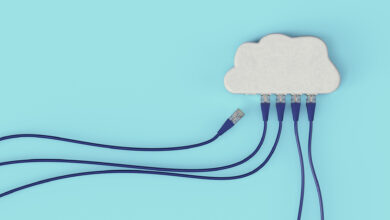LOBSTER_DATA ACHIEVES SAP INTEGRATION CERTIFICATION
Lobster_data 4 has been granted certification for integration with SAP S/4HANA via the SAP integration scenario S/4-CA-ALE 1.0. This confirms the technical compliance of Lobster_data 4 with SAP certification procedures, and allows Lobster and SAP to communicate via a TCP/IP network using the SAP Java Connector (JCo). And all of this without the need for any programming.
Certification was given in August 2020 and expires in 3 years. The certified functions are: Loading repository from SAP IDoc description, ALE outbound processing via tRFC with mapping, and ALE Inbound processing via tRFC with mapping. Unicode communication is also supported. In 2019, a Lobster-supported integration won an SAP Quality Award for Zeelandia, who were able to improve their system performance by restructuring their IT environment and introduce integrated processes on an ERP system from SAP/4HANA.
THE ADVANTAGE OF USING LOBSTER_DATA
As a non-SAP system, Lobster_data uses the same ALE technology that is used to interconnect SAP systems, which supports the automation of various procesess within SAP. This means that the configuration is very familiar for SAP consultants and helps to achieve maximum transparency, flexibility and significant savings in cost. And, of course, connections are highly secure – all to the customer’s benefit.
Lobster_data enables clients to connect existing systems, applications and databases. Regardless of EDI, EAI, MFT or cloud integration. This is done using an intuitive HTML5 user interface (where you work directly in the browser), with user-friendly ready-made function blocks and drag & drop. The software ensures that all business-relevant data or information is smoothly integrated, exchanged and processed between different systems and platforms. To ensure no loss in operational capacity, this takes place with continuous data availability and central monitoring by Lobster.
SAP ALE (IDOC)
- Send & receive IDocs
- Import structure from SAP for IDoc, CIM & Z types
- Asynchronous data transfer
- DOCNUM and TID monitoring
SAP (RFC)
- Call RFC remotely in SAP
- Import structure from SAP
- Synchronous data transfer (with response)
- Data processing via Fixed record, CSV or XML
The software uses all common data formats by default, including major industry standards like EDIFACT, IDoc, XML etc. Communication is enabled via common protocols like SAP ALE, SMPT, AS2, FTP, X.400, and web services. Lobster_data features event-based processing of data including the structure import of different formats – including simple Z-IDoc processing. No scripting or programming is necessary and high processing speeds are guaranteed. Lobster_data is the answer to all your data needs. The right place at the right time.
USE CASE: LOBSTER_DATA & KONICA MINOLTA
Konica Minolta Business Solutions Europe is the subsidiary of the Japanese multinational company Konica Minolta Inc., with over 43,000 employees in more than 150 countries and its European headquarters at Langenhagen in Germany. The company manufactures business and industrial imaging products, including copiers, laser printers, MFPs and digital print systems as well as medical equipment. It is also a service provider of cloud, IT and managed print and video solutions for remote working, collaboration and workflow management.
Architecture – Step 1: Register Custom Listener (SAP.XML)
Lobster Listener Profile and Publish in ActiveMQ
Lobster_data is used to export Konica Minolta’s data directly from SAP S/4HANA. This allows customer data from SAP S/4 ERP system (and other databases) to be available for different third party applications. The cornerstone for the whole construction is the component ‘Custom Listener’ which builds the communication with SAP. The advantage is that Konica Minolta is not restricted just to IDocs but can transfer data in many different flexible structures.
Architecture – Step 2: Connect Lobster_data with ActiveMQ
Instead of using various peer-to-peer integrations, messages are distributed centrally to Konica’s ActiveMQ platform via Lobster_data in a standardized format. In ActiveMQ, messages are distributed to different queues: Queue 1 (CRM), Queue 2 (Shop), Queue 3 (MongoDB).
Architecture – Step 3: (From Queue 3), ActiveMQ to Lobster to MongoDB via Mongo Post Executor
Subscribe to activeMQ & write to MongoDB
Satellite systems can subscribe to events and process data in real time. In addition, Lobster_data itself performs the subscription and stores data in a persistence layer (MongoDB).
THE USP FOR KONICA MINOLTA
- Decoupling SAP and LD through RFC registration – more autonomy in case of errors.
- Decoupling of communication between Lobster_data & satellite systems via ActiveMQ.
- Reduce message size to one message per document (instead of peer-to-peer) -> performance increase & load reduction.
- Integration of data for Big-Data analyses via MongoDB (through central storage in the data lake).
- Use of MongoDB as persistent storage -> flexibility regarding: data usage.
- No complex mapping -> no mapping load -> no susceptibility to errors.
- Use of modern technology.
LOBSTER_DATA – THE DRIVER OF YOUR SUCCESS
This means that customers of Lobster_data can now enjoy all the benefits of secure data transfer when using SAP solutions. If you are looking to restructure your IT landscape and introduce integrated processes on an SAP S/4HANA system, then you need look no further. Lobster_data will remove the stress out of connectiong different production control solutions, CRMs, logistics and other systems via SAP ALE or RFC function modules. Lobster’s collaboration with SAP is the best of both worlds. But don’t just take our word for it:
“An important and essential key factor for the successful go-live was Lobster_data, with which we were able to connect our production control including labelling, CRM, our logisticians and various subsystems to SAP via ALE”.
Oliver Huth, ICT Zeelandia
More articles on our blog.




